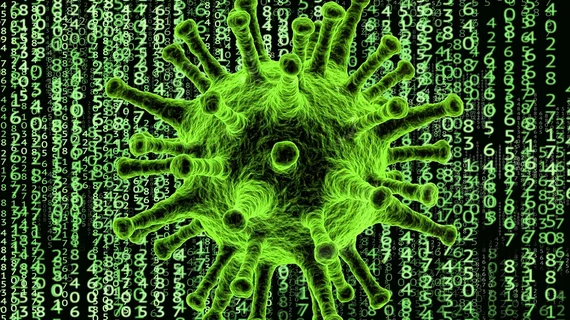Vaccinated patients more likely to exhibit normal chest CT after COVID infection
A Radiology study of imaging data from 3,876 adult patients infected with COVID and referred to emergency departments between July 2021 and March 2022 shows that both variant type and patient vaccinations are associated with disease severity as well as likelihood of chest CT images revealing known COVID-related CT patterns [1].
After previous studies demonstrated that vaccinated patients infected by the original strain of the virus were more likely to have normal CT scans than those who were unvaccinated and also more likely to have lower disease severity, the Radiology study was initiated to better understand whether and how those findings would be impacted for those infected with subsequent variants, Delta and Omicron.
The authors found that, indeed, vaccinated patients infected with Delta or Omicron appeared to fare better when it came to chest CT images than unvaccinated patients: 44% of patients with either of these variants and at least one vaccine dose exhibited COVID-associated chest CT-patterns such as consolidation, intralobular reticulations, fibrotic bands or ground-glass opacity. In comparison, 76% of unvaccinated patients exhibited these typical CT patterns.
The more vaccines a patient had, the more likely they were to have a normal CT reading without any of the COVID-associated radiologic patterns: 43% of patients with three doses, 31% of patients with two doses, and 17% of those with a single dose had normal chest CT.
Vaccination was also associated with lower disease severity across the entire sample, the study found; 25% of vaccinated patients received a high severity score, compared with 43% of unvaccinated patients. Additionally, the number of vaccinations was inversely associated with severity scores; those who had more vaccines were less likely to receive high severity scores.
Our results confirm that both the Omicron variant and vaccination were associated with lower frequency of typical chest CT for COVID-19 and lesser extent of disease, with higher number of vaccine doses showing an increasing protective impact against high severity score, which emphasizes the benefit of the booster dose.”
While the data on chest CT patterns and disease severity was calculated across all patients regardless of variant type, the authors also noted that variant type does play an important role in predicting outcomes for both of these factors.
While variant type was not confirmed on an individual level, cases were classified as taking place during the “Omicron-dominant” period or “Delta-predominant” period. During the Omicron-predominant period, 49% of all chest CTs (for both vaccinated and unvaccinated patients) displayed typical COVID-19 patterns, versus 74% of all chest CTs during the Delta-dominant period.
“Our results confirm that both the Omicron variant and vaccination were associated with lower frequency of typical chest CT for COVID-19 and lesser extent of disease, with higher number of vaccine doses showing an increasing protective impact against high severity score, which emphasizes the benefit of the booster dose,” the researchers concluded.
